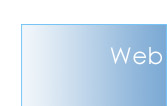Graphic File Formats For Websites
Like all other constraints, which instruct the web designers to follow certain rules and criteria in order to develop the best design, the graphic file format is an add-on which imposes its rules and restrictions. The graphic file formats are nothing but specific formats for the images and graphics like GIF, JPEG and PNG. These formats are used in website designing in order to reduce the data size and to reduce the download time. The process obviously reduces the bandwidth requirement as well. The two types of commonly used file formats are GIF and JPEG. Though PNG format has also been available for a long time, it is not used as often as the other two because of its poor browser support.
Graphic Interchange Format or GIF is the graphic model introduced by CompuServe Information Service in the 1980s. Till then GIF was used by web designers for its efficiency and capability to compress and reduce the file size. All the browsers available in the market which support graphics now support the GIF file format as well. One more advantage is that it can be reduced to 256 or 8-bit palette colours. GIF uses proprietary LZW compression model for compressing images. It was first formulated and introduced by Unisys Corporation. Higher versions of GIF file formats support transparent colour. Interlaced GIF format is another type, which has been popularized by Netscape Navigator.
Another file format compression scheme, which is commonly used, is Joint Photographic Experts Group (JPEG). These are full colour images supporting 24-bit colours. The JPEG has been welcomed by professionals who do / cannot compromise in reducing the colours to 8-bits. Discrete cosine transformation is the sophisticated technique followed by JPEG in order to compress the graphics in a sliding scale. The methodology allows the user to compress the image to the extent he or she wishes to compress it. But it should be remembered that the more the image is compressed, the more it affects the quality of the image.
PNG or Portable Network Graphic is the third type of graphic format which is used by web designers. This format was developed and introduced by a consortium of graphic software developers. It is a nonproprietary alternative to the GIF format. PNG format supports full range of colours and supports transparency and interlacing as well. One more most advantageous feature of PNG is that this format allows inclusion of text in the image which would be recognized by the search engines. This is a unique and varied feature of PNG which is not supported by GIF or JPEG. However, PNG is not a commonly used format as most of the browsers do not support all the features of PNG.
Understanding the specific requirement, we at Xel Web Design use the appropriate file format for images. The format is selected based on where it is proposed to be used and which format can be used to take the best out of it. We believe that uploading and downloading of a website plays a vital role in reaching the customers as an ordinary viewer might close the window if it should take a long time to download a website. So, in order to avoid all these chaos, we use the appropriate file format for all the images used for website design.





